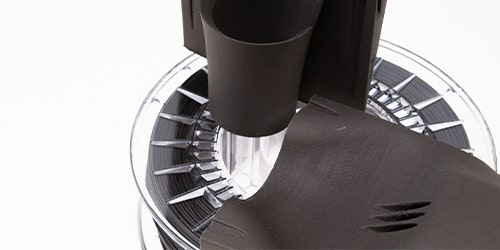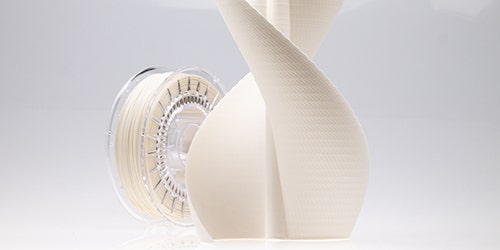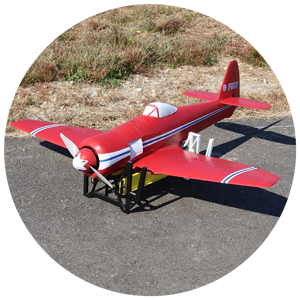3D printing lightweight ASA parts
LW-ASA is the third material in our portfolio to make use of our bespoke light weight additive.
In April 12th 2019 we launched LW-PLA, the first filament of its kind using an active foaming technology to achieve lightweight, low density PLA parts.
This same technology is now integrated into a specifically sourced ASA material, which gives users the benefit of a higher temperature resistance of 96C and inherent UV stability.
LW-ASA is the first ASA filament to use active foaming technology to achieve lightweight, low density ASA parts. At around 240C this material will start foaming, increasing its volume by nearly 2,5 times.
Users can decrease material flow by 40% to achieve lightweight parts, or use the expanding properties to effectively reduce print time by using big layer heights or single extra thick perimeters.
Active foaming technology, how does it work?
The main input variables to control the foaming are speed, temperature and flow. This allows users to vary density of the material for different parts of the model.
We use the following 4 step process to determine the maximum expansion at a certain speed, temperature and flow.
- Print cubes at a set speed in temperatures varying from 230°C up to 260°C
- Measure perimeter thickness of each cube, note temperature with highest expansion.
- Print cubes with decreasing steps of flow, using temperature found in step 2.
- Find the cube at which perimeter thickness equals nozzle size.
Warping and ASA
LW-ASA is more susceptible to warping compared to LW-PLA type filament. Especially models with a large footprint can shrink and warp during printing, but compared to ABS in most cases less severe.
Apart from using a large brim and heated buildplate of 90-100C (or higher if your machine is capable) we can also advice the following. Print a tall skirt around your model to reduce cold air flow around the printed model or print inside an enclosure for better control of the environment temperature.


UP TO 40% WEIGHT REDUCTION


The LW-ASA material is capable of increasing its volume nearly 2,5 times. The filament density is close to 1,07 g/cm3 but when foamed at its maximum capacity users will achieve part density close to 0,43 g/cm3.
HIGH TEMPERATURE RESISTANCE


Rest assured this material will be more capable of handling increased temperatures compared to our LW-PLA. With a respectable temperature resistance of 96C this material will be better equipped to handle the harsh temperatures of the sun.
UV RESISTANCE


Like regular ASA the LW-ASA features inherent UV stability and good weatherability. ASA will retain its mechanical properties much better then for instance regular ABS despite when exposed to the weather influences.
What would you print with LW-ASA?
Areas we are very interested in supporting with LW-ASA are the RC Planes and drones community and cosplay community.
We’re very curious what new applications we’ll find for the LW-ASA filament. What would you make, using our LW-ASA materials.
Light weight | UV resistant | high temperature resistance of 96C.










